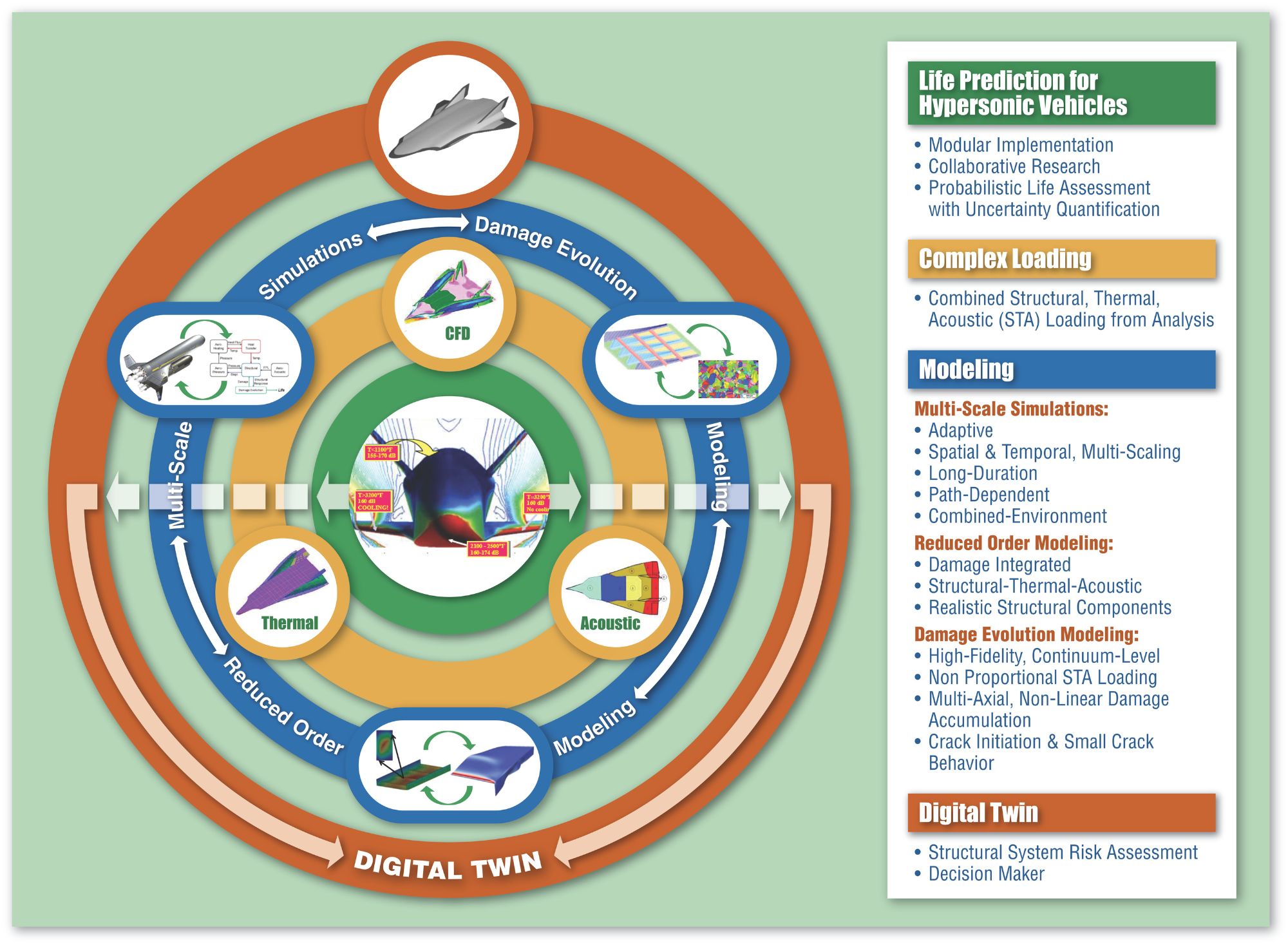Materials and Manufacturing for Hypersonics
Dr. Sangid has considerable experience in the integration of new high temperature materials and manufacturing innovations into the design and structural analysis of hypersonic vehicles. He served as the inaugural executive director of the Hypersonics Advanced Manufacturing Technology Center. As part of these activities, he established and led a $19.5M contract entitled Hypersonics Advanced Manufacturing Test Capability (publicly released abstract is below and presentation available to download here). This project was named a 2023 Success Story via the Office of the Secretary of Defense, Defense-Wide Manufacturing Science and Technology. He also supported the development and led the grand opening of the Purdue Hypersonic and Applied Research Facility.

Many hypersonics development efforts aimed at enhancing the domestic manufacturing capabilities and industrial base have been historically challenged with limitations in the availability of (i) high temperature materials that fulfill hypersonic PESS (Performance; Environment; Size, weight, and power (SWaP); and Schedule) requirements, (ii) testing infrastructure and connectivity of the supply chain resulting in long lead times and scheduling delays, and (iii) reliable transfer of technology to support the warfighter. To overcome these barriers, the Hypersonics Advanced Manufacturing Test Capability (HAMTC) has been established at Purdue, as a means for co-location and active collaboration with industrial partners and federal laboratories within a newly constructed Hypersonics Applied Research Facility to conduct secure and classified work. The objective is to deliver innovations in high temperature materials, novel additive manufacturing (AM) processes and equipment, and prototype sub-assemblies within the Design-Build-Join-Test lifecycle that demonstrate cost savings and yield increases. Based on feedback from leading defense industrial base (DIB) partners, five initial projects have been identified that offer benefit to the Defense-Wide hypersonics community and domestic industrial base: (1) Part reduction and flow path optimization enabled by new AM capabilities in inlet-combustor subsystems of scramjets; (2) Critical joining technologies for thermal protection systems in boost glide vehicles, including the integration of multiple materials with dissimilar thermal expansion behavior into sub-assemblies; (3) Design and development of a tailored Niobium-base alloy to fulfill hypersonic intent capable; (4) Unique AM processing for ultrahigh temperature ceramics, including the design and development of the AM equipment and feedstock material; and (5) Leveraging unique thermo-mechanical, combustion, and high enthalpy testing, in which connectivity to hypersonic wind tunnels will provide a collaborative environment amongst the industrial supply chain.
